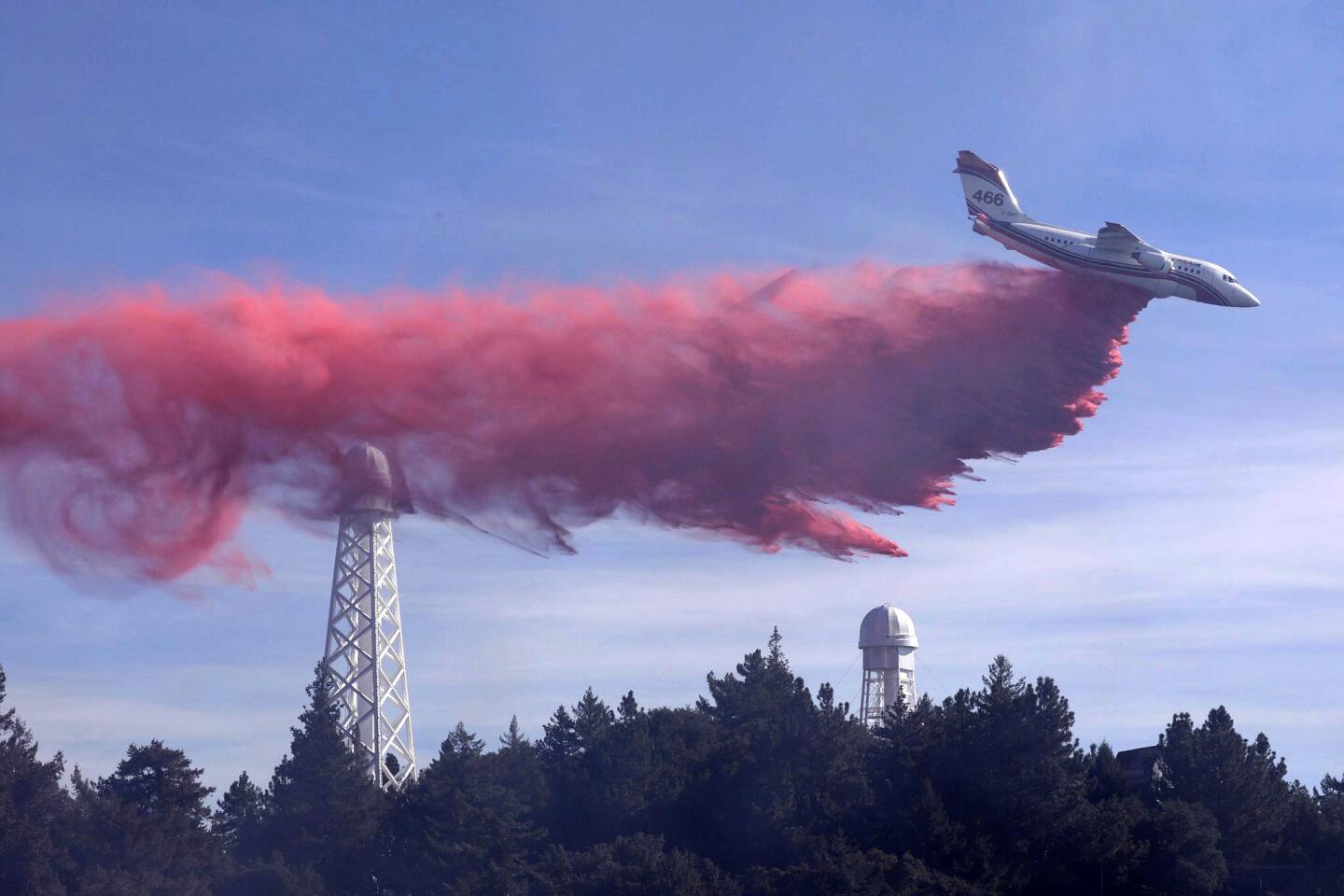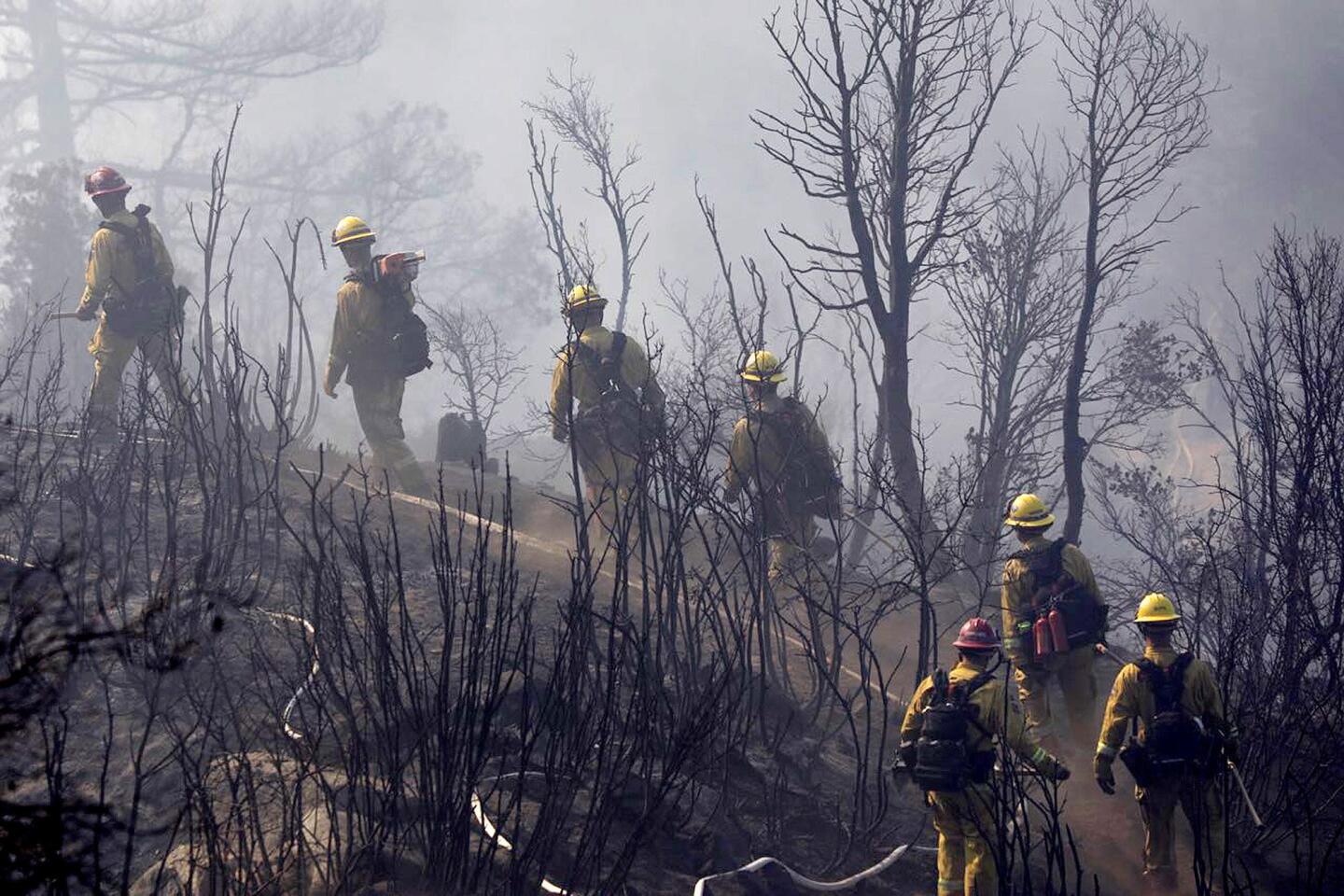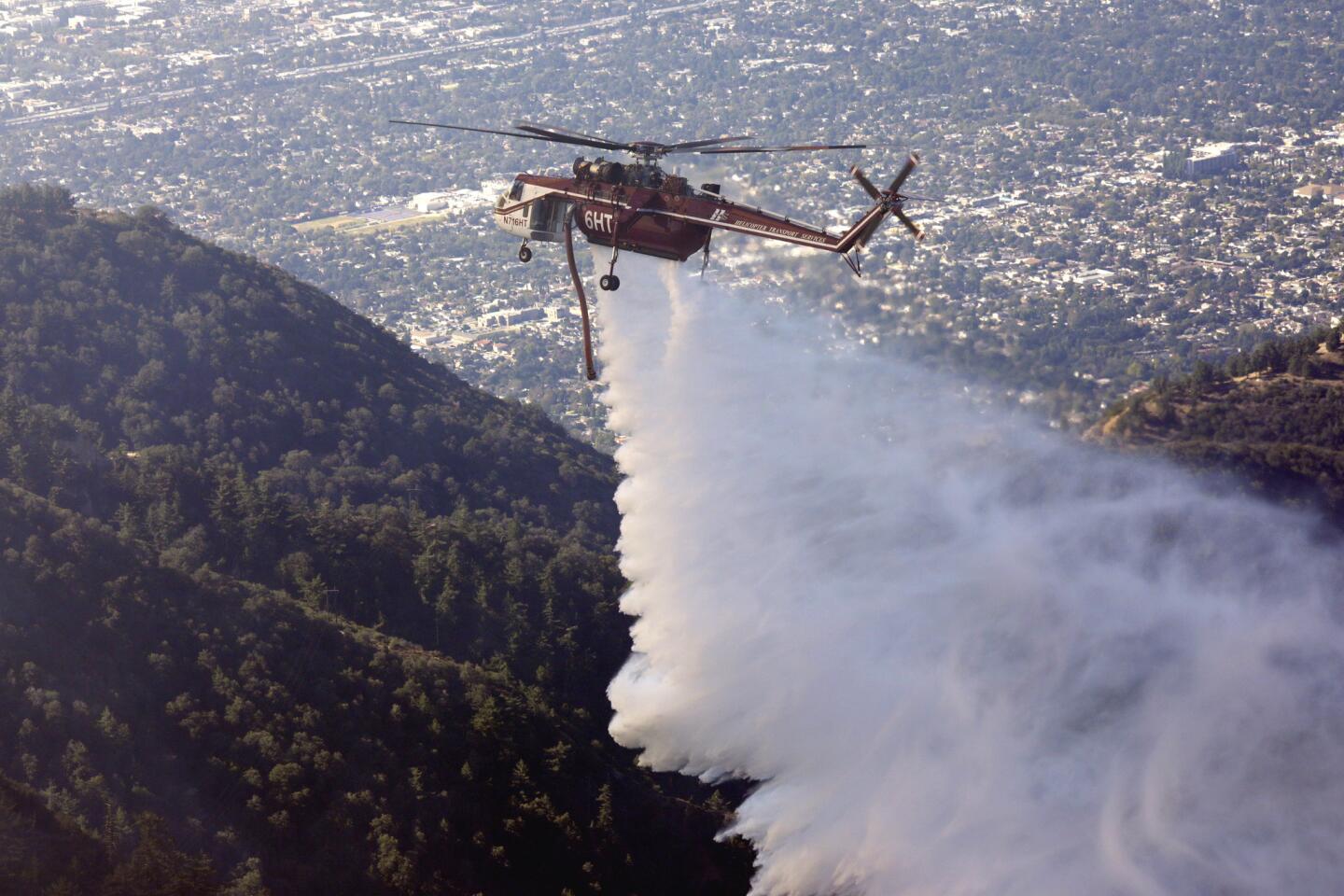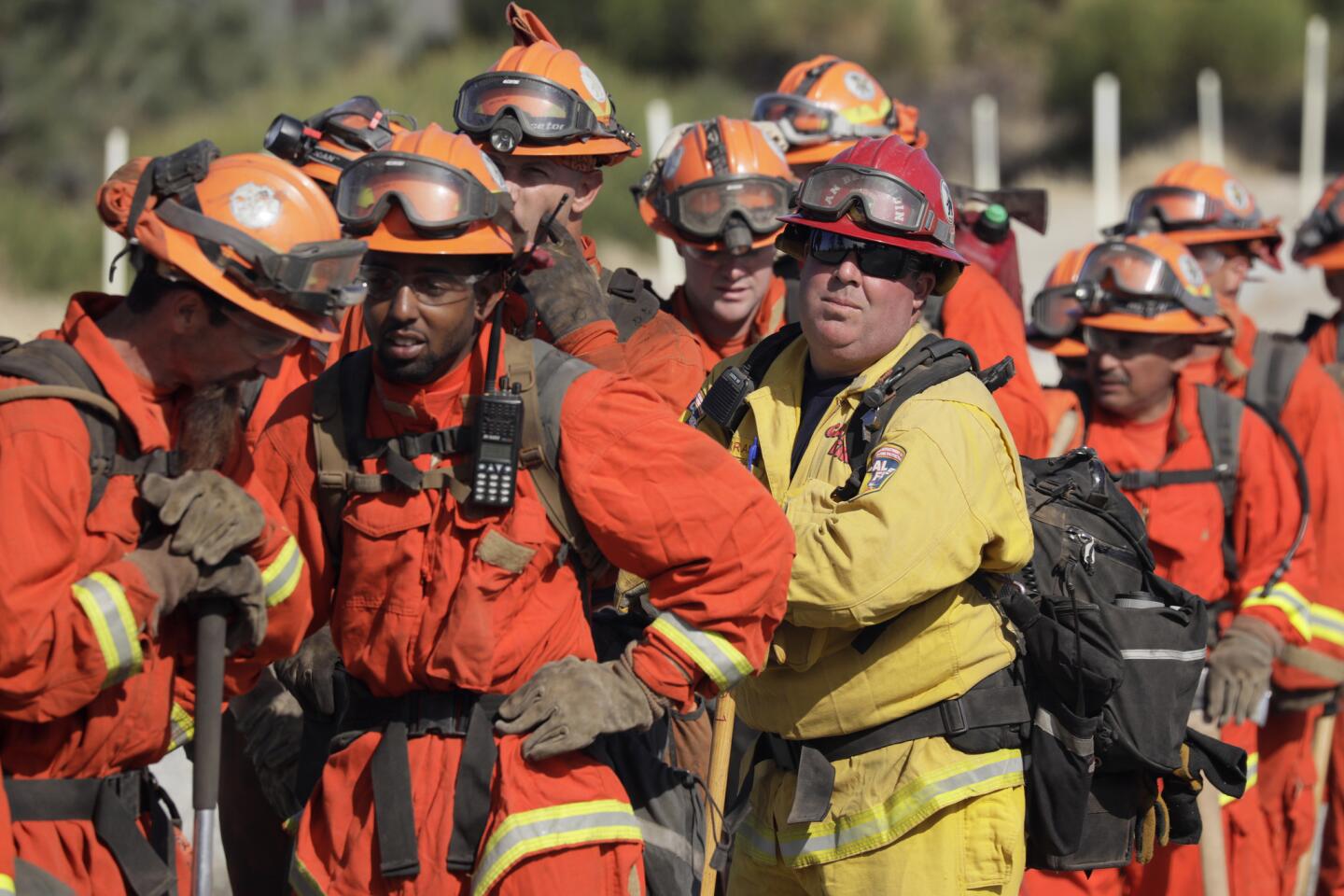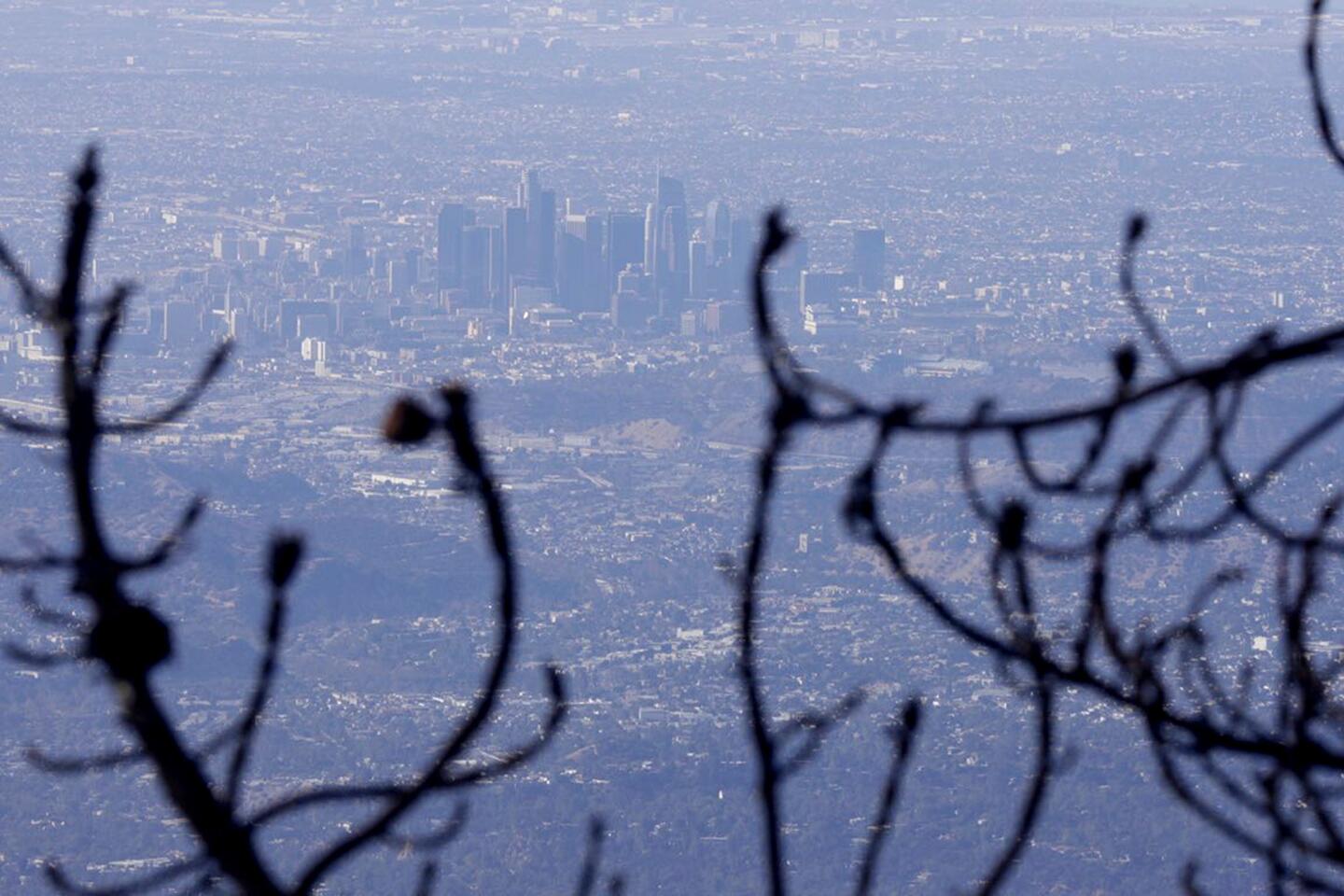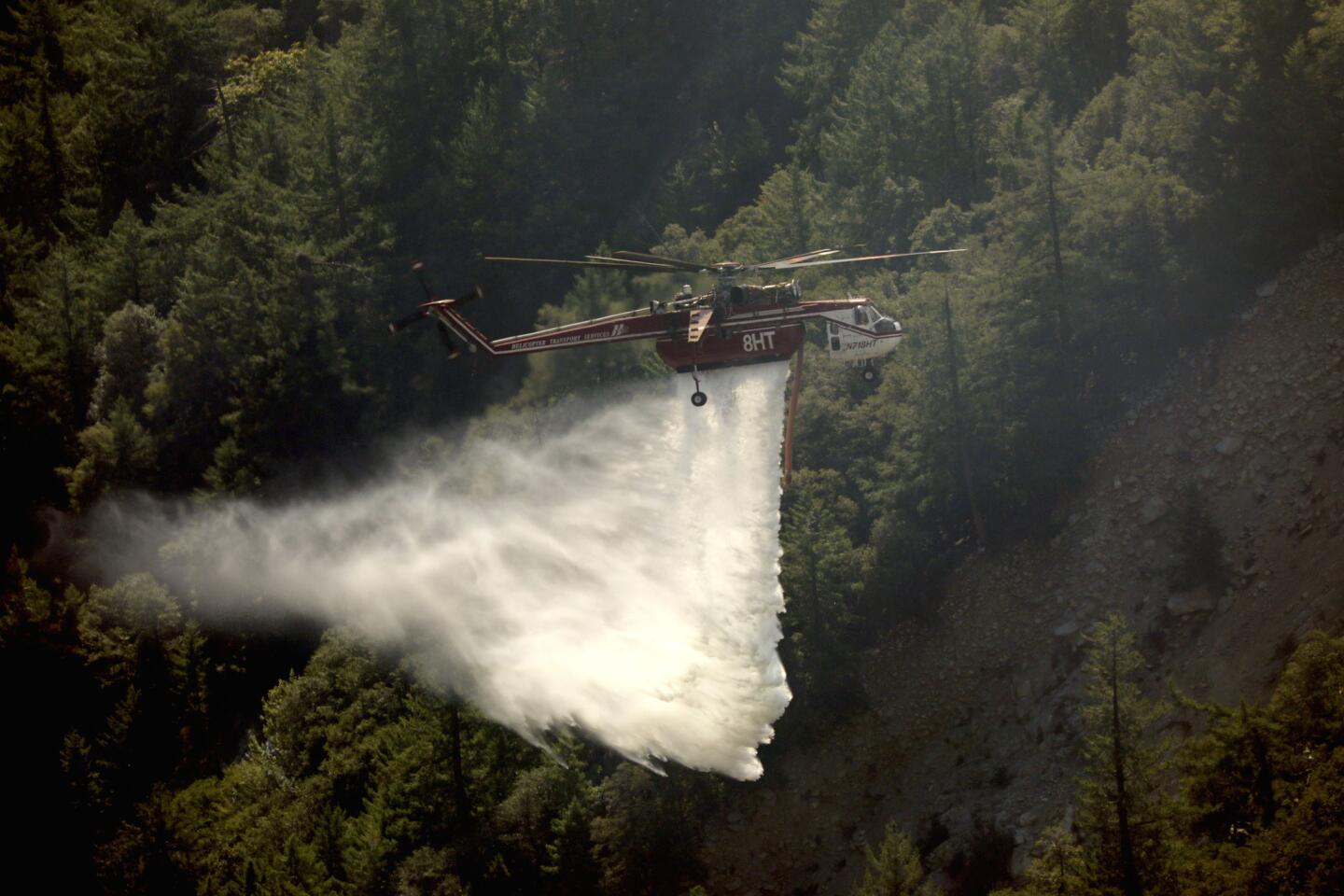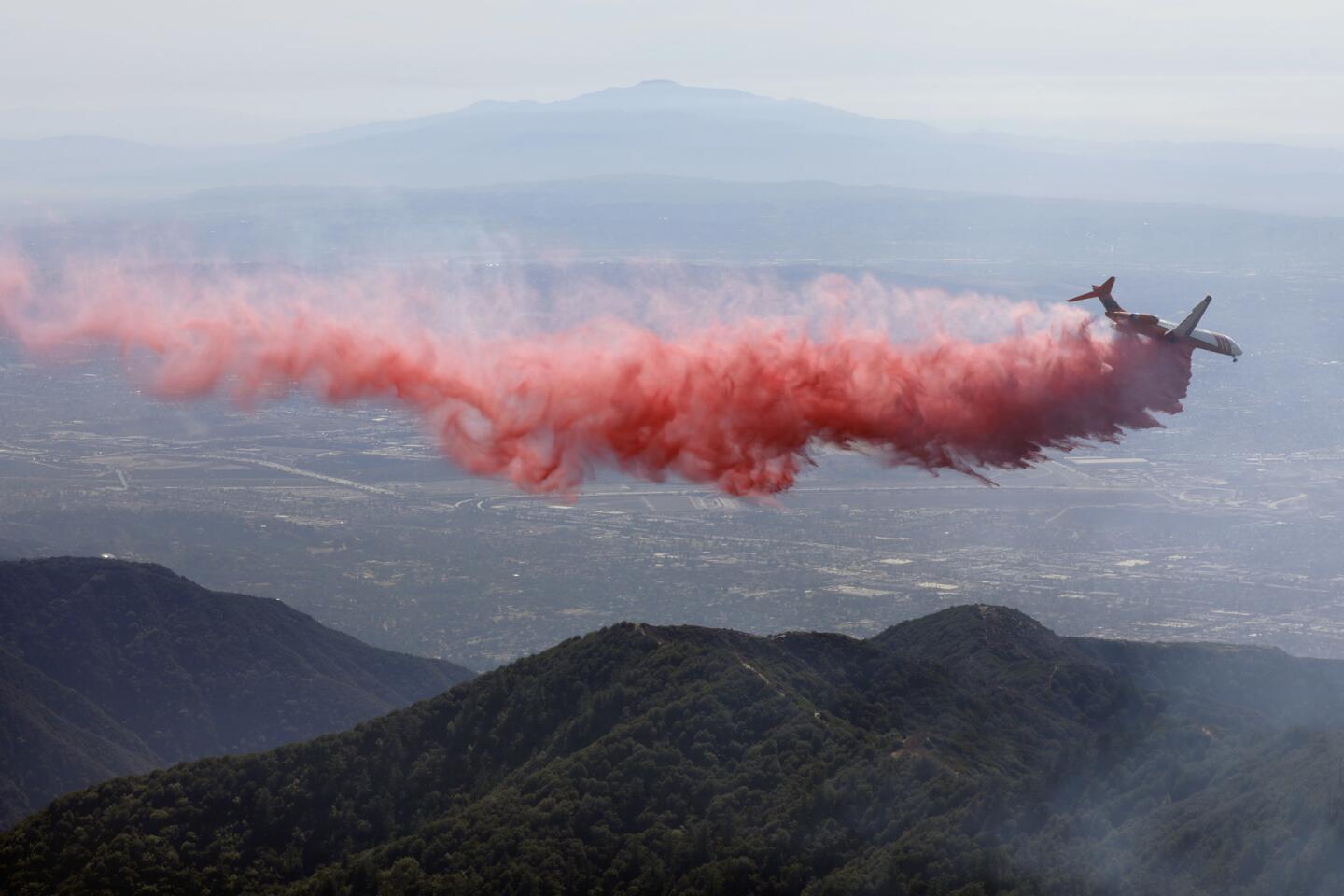Wildfire prompts evacuation of Mt. Wilson Observatory and threatens communication towers
- Share via
Authorities evacuated at least a dozen people from Mt. Wilson on Tuesday morning as a 30-acre wildfire burning in the San Gabriel Mountains threatened to damage the historic mountaintop observatory and an array of television broadcast towers, according to officials.

The fire broke out at 3:54 a.m., somewhere below the parking lot of Mt. Wilson Observatory, and the cause is still under investigation. It was 5% contained as of 10 a.m., Angeles National Forest officials said.
Los Angeles County Sheriff’s Department officials evacuated more than a dozen people from the 10 buildings in and around the observatory Tuesday morning, said Lt. Mark Slater of the sheriff’s Crescenta Valley Station.
Nonessential employees have been evacuated and more than a dozen residents of the area, mostly observatory and communications tower workers, remain, said Seneca Smith, PIO for Angeles National Forest. No mandatory residential evacuations have been issued, she said.
The rough mountain terrain has complicated the logistics of the firefight, Smith said.
Airborne tankers are focusing their efforts on a corner of the fire perched on a sheer hillside. About six “hot shot” crews hiked toward the area Tuesday morning to try to cut a fire line.
More than two dozen antenna towers cluster on the peak of Mt. Wilson. Smith estimates that hundreds of millions of dollars’ worth of communications equipment are at risk, including federal and county facilities used for emergency communications, commercial television facilities and radio transmitters. Damage to the communications towers could disrupt cellphones, television and radios, as well as interrupt some communications for emergency responders.
Officials have closed the observatory and Mt. Wilson Road — the only roadway in and out of the observatory. Twenty structures, including the telecommunication towers, are threatened, Angeles National Forest tweeted Tuesday morning.
Chantry Flats, Santa Anita Canyon and Henninger Flats are closed to recreational activity.
Most Mt. Wilson Observatory employees evacuated, according to a Facebook post on the observatory’s page.
About 300 firefighters and 13 air tankers were on the scene, authorities said. Officials do not know the cause of the fire.
“Right now, it’s not moving fast, just going where it can find fuel,” Angeles National Forest spokesman Nathan Judy said Tuesday morning.
Santa Ana winds have dried out the area over the last few weeks, Smith said, but relatively calm winds Tuesday have kept the fire from growing too quickly. Winds are projected to stay calm through the day, Smith said. It’s not clear when firefighters expect to contain the fire.
“If the wind increases, that’ll produce more of a challenge,” Smith said.
The fire is burning in an area full of brush that has not seen wildfire for decades, Smith said. The last significant fire in the region was the Station fire in 2009. Last year, fire authorities conducted a 50-acre controlled burn near the area.
There are no campsites or campgrounds near the fire, and officials were not aware of any hikers who were on the trail, Judy said.
The fire is burning brush in the forest along the hillside, so it was being driven by terrain and not wind early Tuesday morning, said L.A. County Fire Capt. Ron Haralson.
Temperatures were expected to reach the 90s Tuesday afternoon.
On Tuesday morning, the typically scenic view from the top of Mt. Wilson was obscured by a tower of bronze and gray smoke. Emergency vehicles choked the parking lot. The smell of smoke and fresh pine mingled in the air.
The observatory is a Los Angeles County landmark — home to two of the first large modern telescopes — and has facilitated crucial discoveries about space, said USC physics, astronomy and math professor Nicholas Warner. Universities including USC also use the solar observatory for physics research today, he said.
In 1929, Edwin Hubble used Mt. Wilson’s 100-inch telescope, which will be 100 years old next month, to discover that the universe was expanding, Warner said.
The 60-inch and 100-inch telescopes also provided the blueprint for similar telescopes elsewhere, he said.
They are the “Rolls Royces of telescopes. They are incredibly beautiful, simple machines,” he said. “It’s an amazing piece of history.”
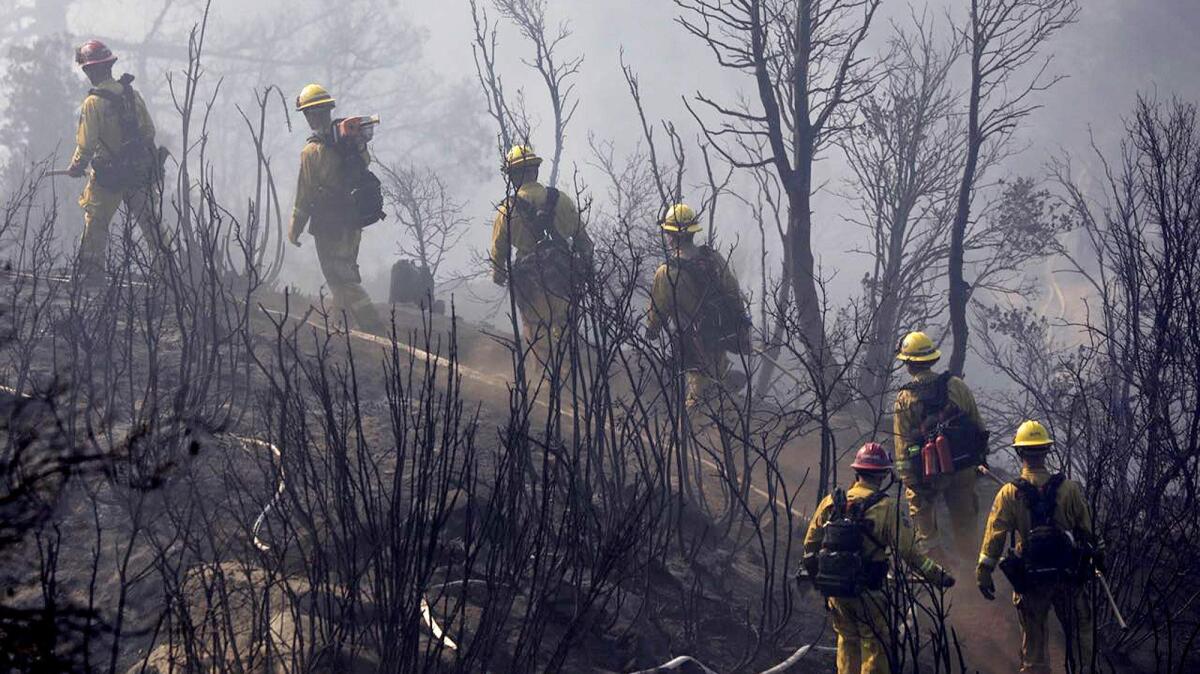
The observatory will likely be closed for a few days, said Craig Woods, a site assistant to the superintendent of the Mt. Wilson Observatory.
During his morning commute on the 210 Freeway, at around 4 a.m., Woods spotted a red glow on a mountaintop. A fire had broken out in the San Gabriel Mountains.
From a distance, he couldn’t be certain that the flames were surrounding his workplace and part-time residence, the Mt. Wilson Observatory.
So he kept driving toward the mountains to make sure. The historic telescopes of the observatory, he said, are priceless. It was his job to protect them.
“There’s no way I wasn’t going to go here,” Woods said Tuesday afternoon, standing on the observatory grounds.
The telescopes at the Mt. Wilson Observatory, Woods said, are installed into the foundation of the facility and can’t be moved in the event of a fire threat.
Woods said about 10 people claim residences at facilities at Mt. Wilson, including a French astronomy research team. He is one of about four people still on site to try to protect the facilities if the fire comes their way.
Early risers throughout the San Gabriel Valley and beyond shared their views of the fire Tuesday morning.
ALSO
Power lines and electrical equipment are a leading cause of California wildfires
Firefighters continue to gain ground on deadly Northern California blazes
He wouldn't evacuate, then used Facebook Live to broadcast firestorm in his hometown
UPDATES:
1:40 p.m.: This article was updated with an interview of Craig Woods.
12:20 p.m.: This article was updated with information about the fire and the history of Mt. Wilson.
10:50 a.m.: This article was updated with information about the fire acreage, containment, structures threatened and evacuations.
9:30 a.m.: This article was updated with information from the Mt. Wilson Observatory.
8:05 a.m.: This article was updated to include information from the Angeles National Forest.
7 a.m.: This article was updated to include the most recent information about the size of the fire and threatened structures.
6:40 a.m.: This article was updated to include updated acreage and the location of the fire.
6:10 a.m.: This article was updated to include tweets of the fire from around Los Angeles
5:25 a.m.: This article was updated to add comments from the
This article was originally published at 5:10 a.m.
Sign up for Essential California
The most important California stories and recommendations in your inbox every morning.
You may occasionally receive promotional content from the Los Angeles Times.
